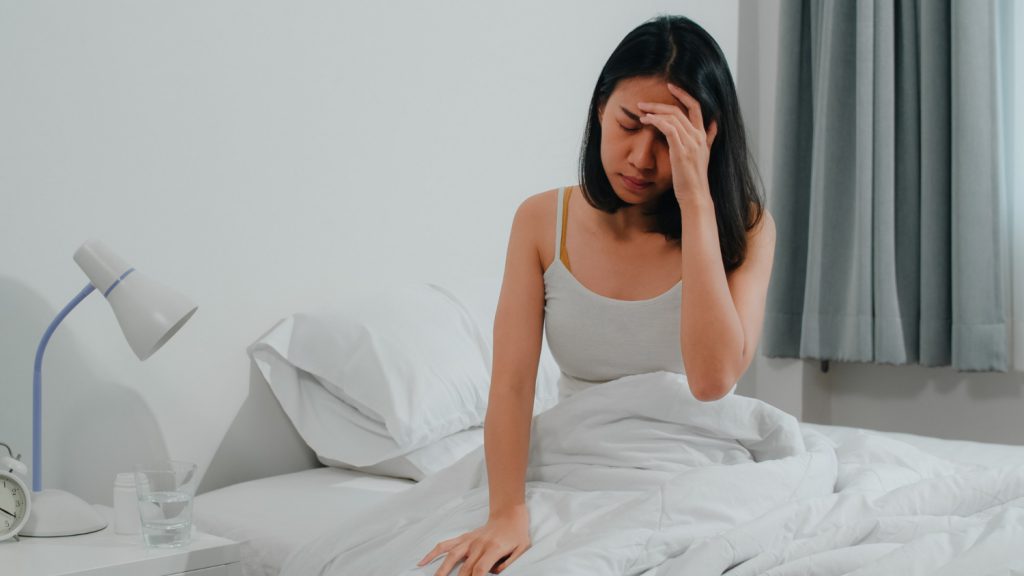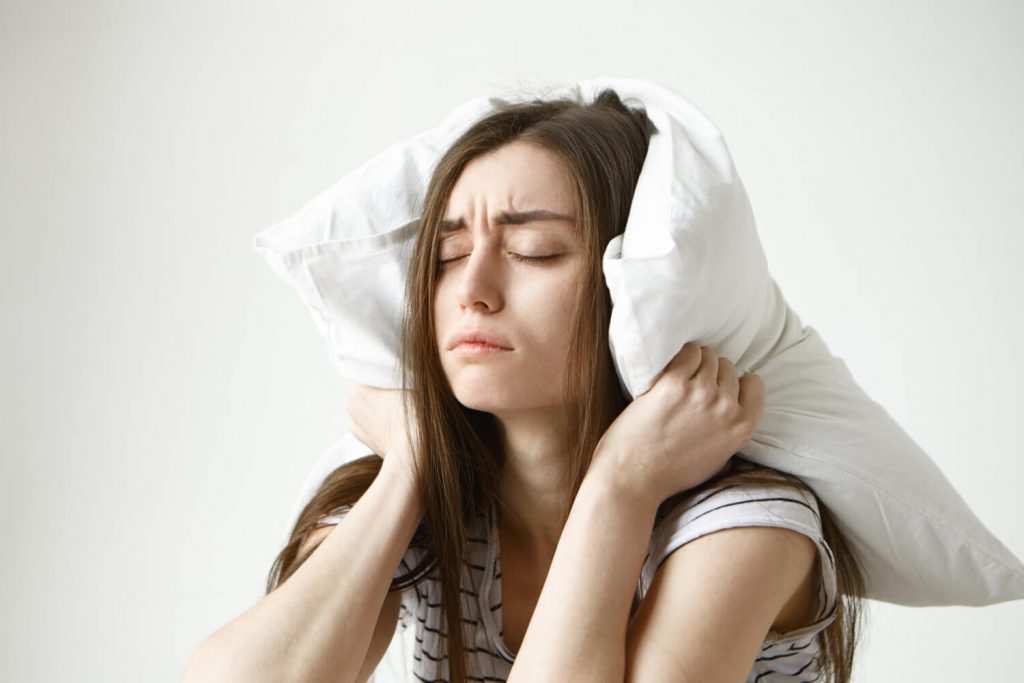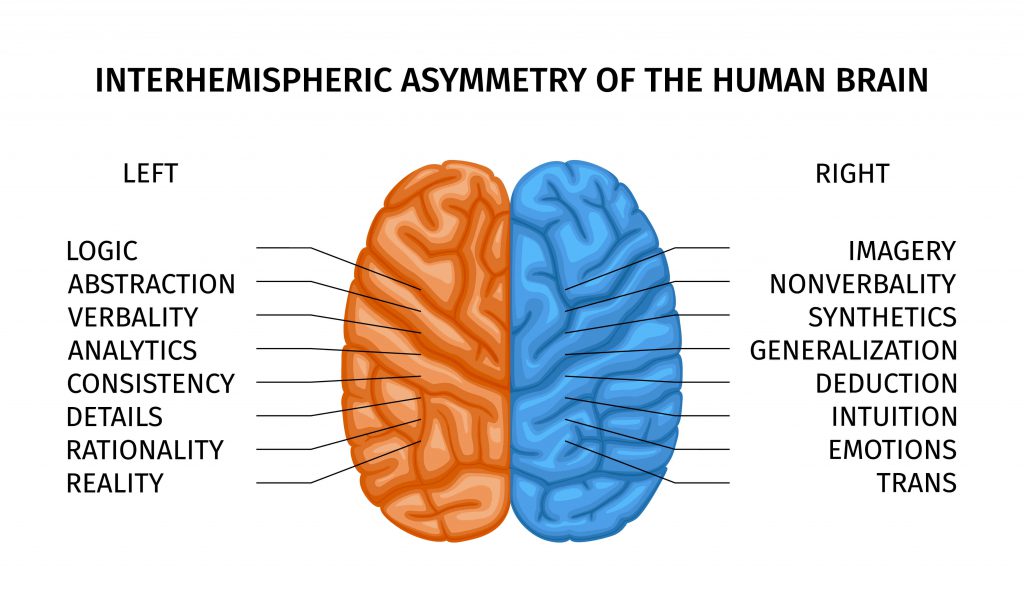Insomnia Origins
Insomnia, a pervasive sleep disorder characterized by persistent difficulty falling asleep, staying asleep, or experiencing non-restorative sleep, affects a significant portion of the global population. Its origins are multifaceted, involving a complex interplay of psychological, physiological, environmental, and lifestyle factors. Understanding these origins is paramount for developing effective interventions and improving sleep quality.
Psychological Origins:
The psychological realm is a breeding ground for insomnia. Stress, anxiety, and depression are potent disruptors of sleep architecture. The body’s “fight-or-flight” response, triggered by stress, releases cortisol, a hormone that, while essential for survival, disrupts the delicate balance of sleep-wake cycles. Chronic stress leads to sustained cortisol elevation, making it difficult to initiate and maintain sleep. Anxiety, characterized by excessive worry and apprehension, fuels a cycle of rumination and sleeplessness. The anticipatory anxiety about not being able to sleep can become a self-fulfilling prophecy. Depressive disorders, often accompanied by changes in neurotransmitter levels, frequently manifest as insomnia. The reduced serotonin and norepinephrine levels associated with depression disrupt sleep patterns, leading to frequent awakenings and non-restorative sleep.
Time to feel better. Find a mental, physical health expert that works for you.
Traumatic experiences, such as those associated with post-traumatic stress disorder (PTSD), can profoundly disrupt sleep. Nightmares, flashbacks, and hyperarousal are common symptoms of PTSD, leading to fragmented and disturbed sleep. The amygdala, the brain’s fear center, becomes hyperactive in PTSD, leading to heightened vigilance and difficulty relaxing. Obsessive-compulsive disorder (OCD), characterized by intrusive thoughts and repetitive behaviors, can also interfere with sleep. The need to perform rituals before sleep and the anxiety associated with obsessive thoughts can delay sleep onset and disrupt sleep continuity. Personality traits, such as neuroticism and perfectionism, can also predispose individuals to insomnia. These traits often involve a tendency to worry excessively and ruminate on negative experiences, leading to sleep disturbances.
Physiological Origins:
Physiological factors encompass a broad range of underlying medical conditions and biological changes that contribute to insomnia. Chronic pain, arthritis, and musculoskeletal disorders can cause discomfort that interferes with sleep. The constant pain signals disrupt the brain’s ability to transition into a restful state. Gastrointestinal issues, such as gastroesophageal reflux disease (GERD), can cause nighttime heartburn and discomfort, leading to frequent awakenings. Hormonal fluctuations, particularly in women, play a significant role in sleep disturbances. Menopause, characterized by declining estrogen and progesterone levels, often leads to hot flashes and night sweats, disrupting sleep. Pregnancy, with its hormonal shifts and physical discomfort, can also lead to fragmented sleep.
Neurological conditions, such as restless legs syndrome (RLS) and sleep apnea, are significant contributors to insomnia. RLS, characterized by an irresistible urge to move the legs, often worsens at night, making it difficult to fall asleep. Sleep apnea, characterized by repeated interruptions in breathing during sleep, leads to frequent awakenings and non-restorative sleep. Obstructive sleep apnea, the most common form, is often associated with obesity and anatomical abnormalities in the upper airway. Central sleep apnea, less common, is related to neurological conditions.
Circadian rhythm disorders, resulting from disruptions to the body’s internal clock, can lead to chronic insomnia. Shift work, involving rotating or night shifts, disrupts the body’s natural sleep-wake cycle. Jet lag, caused by rapid travel across time zones, also disrupts circadian rhythms. Delayed sleep-wake phase syndrome (DSWPD), characterized by a natural tendency to fall asleep and wake up later, is common in adolescents and young adults. Advanced sleep-wake phase syndrome (ASWPD), characterized by a tendency to fall asleep and wake up earlier, is more common in older adults.
Certain medications can have insomnia as a side effect. Stimulants, such as caffeine and nicotine, can interfere with sleep onset and maintenance. Antidepressants, while intended to improve mood, can also disrupt sleep patterns. Beta-blockers, used to treat high blood pressure, can interfere with melatonin production. Corticosteroids, used to treat inflammation, can cause insomnia and restlessness.
Environmental Origins:
The sleep environment plays a crucial role in sleep quality. An uncomfortable sleep environment, characterized by noise, light, or extreme temperatures, can hinder sleep initiation and maintenance. Noise pollution, from traffic or neighbors, can disrupt sleep continuity. Light exposure, particularly blue light from electronic devices, suppresses melatonin production, a hormone essential for sleep regulation. Extreme temperatures, either too hot or too cold, can make it difficult to fall asleep and stay asleep.
Irregular sleep schedules, often due to social or work obligations, can disrupt the body’s natural sleep-wake cycle. Social jet lag, the discrepancy between weekday and weekend sleep schedules, can lead to chronic sleep deprivation. A lack of exposure to natural light during the day can also disrupt circadian rhythms.
Lifestyle Origins:
Lifestyle factors significantly influence sleep quality. Caffeine and alcohol consumption, particularly close to bedtime, can interfere with sleep. Caffeine, a stimulant, blocks adenosine, a neurotransmitter that promotes sleep. Alcohol, while initially inducing drowsiness, disrupts sleep architecture and leads to fragmented sleep. Nicotine, a stimulant, also disrupts sleep. Smoking before bed can lead to difficulty falling asleep and frequent awakenings.
Poor sleep hygiene, including inconsistent sleep schedules, lack of a relaxing bedtime routine, and daytime napping, can perpetuate insomnia. A sedentary lifestyle can reduce sleep quality. Regular physical activity, while beneficial, should be avoided close to bedtime. Dietary habits, such as heavy meals or sugary snacks before bed, can disrupt sleep. Eating late at night can interfere with digestion and lead to discomfort, making it difficult to fall asleep.
Genetic Origins:
Genetic predispositions can also play a role in insomnia. Some individuals may be genetically more susceptible to sleep disturbances. Research has identified several genes associated with sleep regulation and insomnia. Variations in these genes can affect the production and function of neurotransmitters and hormones involved in sleep. Family history of insomnia is a significant risk factor.
The interaction of these factors can create a complex picture of insomnia origins. It’s often a combination of several of these elements that result in chronic sleep problems. Identifying the specific origins of insomnia is crucial for developing a tailored and effective treatment plan.
Insomnia Management
Managing insomnia effectively requires a comprehensive, multi-faceted approach, addressing the underlying causes and implementing strategies to improve sleep quality. Behavioral therapies, lifestyle modifications, and, in some cases, medication are key components of successful insomnia management.
Cognitive Behavioral Therapy for Insomnia (CBT-I):
CBT-I is considered the gold standard for treating chronic insomnia. It is a structured program that helps individuals identify and change negative thoughts and behaviors that perpetuate insomnia. CBT-I typically involves several components, including sleep restriction therapy, stimulus control therapy, relaxation techniques, and cognitive therapy.
Sleep restriction therapy involves limiting time spent in bed to increase sleep efficiency. By reducing the time spent in bed, individuals are able to consolidate their sleep and improve sleep quality. Stimulus control therapy aims to reassociate the bed with sleep by avoiding non-sleep activities in bed. This involves getting out of bed if you are unable to fall asleep within 20 minutes and only using the bed for sleep and intimacy. Relaxation techniques, such as progressive muscle relaxation, deep breathing exercises, and mindfulness meditation, can reduce anxiety and promote sleep. Progressive muscle relaxation involves tensing and relaxing different muscle groups to reduce physical tension. Deep breathing exercises can calm the nervous system and promote relaxation. Mindfulness meditation involves focusing on the present moment and accepting thoughts and feelings without judgment.
Cognitive therapy helps challenge and change maladaptive beliefs about sleep. This involves identifying and modifying negative thoughts about sleep, such as “I will never be able to sleep again” or “I need eight hours of sleep to function.” Cognitive restructuring techniques help individuals develop more realistic and positive beliefs about sleep.
Lifestyle Modifications:
Lifestyle modifications are essential for improving sleep hygiene. Establishing a consistent sleep schedule, even on weekends, helps regulate the body’s circadian rhythm. This involves going to bed and waking up at the same time every day, regardless of how well you slept the night before. Creating a relaxing bedtime routine, such as taking a warm bath, reading a book, or listening to calming music, signals to the body that it’s time to sleep.
Optimizing the sleep environment by ensuring a dark, quiet, and cool room can enhance sleep quality. This involves using blackout curtains, earplugs, and a fan or air conditioner to create a conducive sleep environment. Avoiding caffeine and alcohol, especially in the evening, is crucial. Caffeine, a stimulant, can interfere with sleep onset and maintenance. Alcohol, while initially inducing drowsiness, disrupts sleep architecture and leads to fragmented sleep.
Regular exercise, preferably in the morning or afternoon, can improve sleep, but avoid exercising too close to bedtime. Exercise can promote relaxation and improve sleep quality, but exercising too close to bedtime can interfere with sleep onset. Limiting screen time before bed and avoiding blue light exposure can promote melatonin production. Blue light from electronic devices, such as smartphones, tablets, and computers, suppresses melatonin production, a hormone essential for sleep regulation.
Sleep hygiene education is a crucial part of insomnia management. This includes instructing patients on the importance of regular sleep schedules, avoiding naps, and creating a conducive sleep environment. Naps can disrupt nighttime sleep, so it’s best to avoid them or limit them to short periods in the early afternoon. Diet also plays a role. A balanced diet and avoiding heavy meals or sugary snacks before bed can improve sleep. Eating a heavy meal before bed can interfere with digestion and lead to discomfort, making it difficult to fall asleep.
Connect Free. Improve your mental and physical health with a professional near you

Medication:
In some cases, medication may be necessary to manage insomnia, particularly when other treatments are ineffective. Short-term use of sleep aids can provide temporary relief, but long-term use is generally discouraged due to potential side effects and dependency. Sleep aids can cause daytime drowsiness, cognitive impairment, and dependence.
Melatonin supplements can be helpful for regulating the sleep-wake cycle, especially in cases of circadian rhythm disorders. Melatonin is a hormone that regulates the sleep-wake cycle. Melatonin supplements can help individuals with circadian rhythm disorders, such as shift work disorder or jet lag, fall asleep and stay asleep. Antidepressants with sedative properties may be prescribed for individuals with comorbid depression or anxiety. Some antidepressants, such as trazodone and amitriptyline, have sedative properties and can help improve sleep quality in individuals with comorbid depression or anxiety.
Alternative therapies, such as acupuncture, massage, and herbal remedies, may provide some relief, but their effectiveness is not consistently supported by scientific evidence. Acupuncture involves inserting thin needles into specific points on the body to promote relaxation and improve sleep. Massage can reduce muscle tension and promote relaxation, which can improve sleep quality. Herbal remedies, such as valerian root and chamomile, have been used for centuries to promote sleep. However, more research is needed to determine their effectiveness.
A combination of these approaches, tailored to individual needs, is often the most effective strategy for managing insomnia. Regular follow-up with a healthcare professional is essential to monitor progress and adjust treatment as needed.
Pediatric Sleep Disorders
Sleep disorders in children and teens are prevalent and can significantly impact their physical, emotional, and cognitive development. Recognizing and addressing these issues is crucial for their well-being. The pediatric population has unique sleep needs and vulnerabilities, requiring specialized approaches to assessment and treatment.
Infant and Toddler Sleep Disorders:
Infants and toddlers may experience sleep problems such as frequent night awakenings, difficulty falling asleep, and night terrors. Frequent night awakenings are common in infants, as they have shorter sleep cycles and require frequent feedings. Establishing consistent bedtime routines, such as a bath, story time, and lullabies, can help infants learn to associate bedtime with sleep. Ensuring a comfortable sleep environment, with a dark, quiet, and cool room, can also promote sleep.
Addressing underlying medical conditions like colic or reflux is essential. Colic, characterized by excessive crying and fussiness, can disrupt sleep. Reflux, characterized by stomach acid flowing back into the esophagus, can cause discomfort and lead to frequent awakenings. Sleep training methods, such as the “cry it out” approach or the “Ferber method,” can be used with caution and under professional guidance. These methods involve gradually increasing the time between parental interventions to help infants learn to self-soothe and fall asleep independently. However, these methods should be used with caution and under the guidance of a pediatrician or sleep specialist.
Preschool and School-Aged Child Sleep Disorders:
Preschoolers and school-aged children may experience sleepwalking, night terrors, and bedwetting. These parasomnias are often benign and resolve with age, but persistent or disruptive episodes may require intervention. Sleepwalking involves walking or performing other activities while asleep. Night terrors are characterized by sudden awakenings with screaming, crying, and intense fear. Bedwetting, or nocturnal enuresis, is common in young children and usually resolves with age.
Sleep-related breathing disorders, such as obstructive sleep apnea (OSA), can also affect children, leading to daytime sleepiness, behavioral problems, and cognitive difficulties. OSA is characterized by repeated interruptions in breathing during sleep. Tonsillectomy and adenoidectomy are often effective treatments for OSA in children. These procedures involve removing the tonsils and adenoids, which can obstruct the airway.
Teenage Sleep Disorders:
Teenagers often experience delayed sleep-wake phase syndrome (DSWPD), characterized by a natural tendency to fall asleep and wake up later. This can clash with early school start times, leading to chronic sleep deprivation. The biological changes associated with puberty contribute to DSWPD. Educating teens about the importance of sleep hygiene, including consistent sleep schedules, limiting caffeine and screen time, and creating a relaxing bedtime routine, is crucial.
Behavioral interventions are often effective for pediatric sleep disorders. Establishing consistent bedtime routines, creating a conducive sleep environment, and implementing positive reinforcement techniques can improve sleep quality. Positive reinforcement involves rewarding children for good sleep habits, such as staying in bed all night. Cognitive behavioral therapy (CBT) can help children and teens manage anxiety and negative thoughts that interfere with sleep. CBT helps children and teens identify and change negative thoughts and behaviors that perpetuate sleep problems.
Parental involvement is crucial in addressing pediatric sleep disorders. Parents should model healthy sleep habits, create a supportive sleep environment, and enforce consistent bedtime routines. Addressing parental anxiety and promoting a calm and structured home environment can also improve children’s sleep. Parental anxiety can be contagious and can interfere with children’s sleep.
Medical interventions may be necessary in some cases. Melatonin supplements can be helpful for regulating the sleep-wake cycle in children with DSWPD. Melatonin is a hormone that regulates the sleep-wake cycle. Melatonin supplements can help children with DSWPD fall asleep earlier and wake up earlier. Medication may be prescribed for underlying medical conditions, such as ADHD or anxiety, that contribute to sleep problems. ADHD and anxiety can interfere with sleep, so treating these conditions can improve sleep quality.
Regular sleep assessments and monitoring are essential to ensure the effectiveness of interventions. Collaborating with pediatricians, sleep specialists, and therapists can provide comprehensive care for children and teens with sleep disorders. A multidisciplinary approach is often necessary to address the complex needs of children and teens with sleep disorders.
Women’s Sleep Health
Women’s sleep health is uniquely influenced by hormonal fluctuations, reproductive life stages, and societal factors. Understanding these factors is crucial for addressing sleep disturbances and promoting overall well-being. Women experience a range of physiological and social changes throughout their lives that can impact their sleep quality.
Menstrual Cycle-Related Sleep Disturbances:
Menstrual cycle-related sleep disturbances are common. Hormonal changes, particularly fluctuations in estrogen and progesterone, can affect sleep quality. Estrogen and progesterone play a role in regulating the sleep-wake cycle. Fluctuations in these hormones can lead to changes in sleep architecture, making it difficult to fall asleep and stay asleep. Premenstrual syndrome (PMS) and premenstrual dysphoric disorder (PMDD) can cause insomnia, irritability, and mood changes that disrupt sleep. PMS is characterized by a range of physical and emotional symptoms that occur in the days leading up to menstruation. PMDD is a more severe form of PMS that can significantly impact daily functioning.
Pregnancy and Postpartum Sleep Disturbances:
Pregnancy significantly impacts sleep. Hormonal shifts, physical discomfort, and frequent nighttime awakenings due to bathroom trips contribute to sleep disturbances. The hormonal changes associated with pregnancy can lead to changes in sleep architecture. Physical discomfort, such as back pain and heartburn, can also interfere with sleep. Frequent nighttime awakenings due to bathroom trips are common during pregnancy, as the growing uterus puts pressure on the bladder.
Sleep apnea and restless legs syndrome are also more common during pregnancy. Sleep apnea is characterized by repeated interruptions in breathing during sleep. Restless legs syndrome is characterized by an irresistible urge to move the legs, often accompanied by unpleasant sensations. Postpartum sleep disturbances are prevalent. Caring for a newborn, hormonal changes, and emotional adjustments can disrupt sleep patterns. Caring for a newborn involves frequent nighttime feedings and diaper changes, which can lead to sleep deprivation. Hormonal changes after childbirth can also disrupt sleep. Emotional adjustments, such as postpartum depression and anxiety, can further exacerbate sleep problems.
Perimenopause and Menopause Sleep Disturbances:
Perimenopause and menopause are significant life stages that affect sleep. Hot flashes, night sweats, and hormonal fluctuations can lead to frequent awakenings and poor sleep quality. Hot flashes are sudden feelings of warmth, often accompanied by sweating and flushing. Night sweats are hot flashes that occur at night. Hormonal fluctuations during perimenopause and menopause can lead to changes in sleep architecture.
Hormone replacement therapy (HRT) may provide some relief, but its risks and benefits should be carefully evaluated. HRT involves taking medications that contain estrogen and progesterone. HRT can help alleviate hot flashes and night sweats, but it also carries risks, such as increased risk of blood clots and breast cancer.
Societal and Psychological Factors:
Women are more likely to experience insomnia than men. Societal factors, such as caregiving responsibilities and work-life balance challenges, can contribute to sleep deprivation. Women are often primary caregivers for children and elderly parents, which can lead to sleep deprivation. Women also face challenges in balancing work and family responsibilities, which can lead to stress and sleep problems.
Women are also more prone to anxiety and depression, which can further exacerbate sleep problems. Anxiety and depression are common mental health conditions that can interfere with sleep. Women are more likely to experience these conditions than men.
Lifestyle modifications are essential for improving women’s sleep health. Maintaining a consistent sleep schedule, creating a relaxing bedtime routine, and optimizing the sleep environment are crucial. Regular exercise, stress management techniques, and a balanced diet can also promote sleep. Exercise can promote relaxation and improve sleep quality. Stress management techniques, such as yoga and meditation, can reduce anxiety and improve sleep quality. A balanced diet can provide the nutrients needed for good sleep.
Cognitive behavioral therapy for insomnia (CBT-I) is a first-line treatment for women with insomnia. CBT-I helps address negative thoughts and behaviors that perpetuate sleep problems. CBT-I can help women identify and change negative thoughts about sleep, such as “I will never be able to sleep again.” CBT-I can also help women develop healthy sleep habits, such as establishing a consistent sleep schedule.
Medical interventions may be necessary in some cases. Hormone therapy, antidepressants, and sleep aids may be prescribed to manage specific sleep disturbances. Hormone therapy can help alleviate hot flashes and night sweats. Antidepressants can help improve mood and sleep quality in women with comorbid depression or anxiety. Sleep aids can provide temporary relief from insomnia, but long-term use is generally discouraged. Addressing underlying medical conditions, such as thyroid disorders or chronic pain, is also crucial. Thyroid disorders and chronic pain can interfere with sleep, so treating these conditions can improve sleep quality.
Promoting awareness and education about women’s sleep health is essential. Healthcare providers should routinely screen for sleep disturbances and provide tailored recommendations.

Free consultations. Connect free with local health professionals near you.
Insomnia & Mental Wellness
The relationship between insomnia and mental wellness is bidirectional. Insomnia can exacerbate mental health conditions, and mental health disorders can contribute to insomnia. Understanding this complex interplay is crucial for effective management. Mental health and sleep are intricately connected, with each influencing the other in a dynamic and often detrimental cycle.
Insomnia as a Symptom of Mental Health Disorders:
Insomnia is a common symptom of mental health disorders, including depression, anxiety, bipolar disorder, and PTSD. Sleep disturbances can worsen symptoms of these conditions, creating a cycle of distress. Depression is often accompanied by insomnia. Sleep disturbances, such as difficulty falling asleep, frequent awakenings, and early morning awakenings, can exacerbate depressive symptoms. The reduced serotonin and norepinephrine levels associated with depression disrupt sleep patterns. Addressing insomnia is crucial for improving mood and overall well-being.
Anxiety disorders, such as generalized anxiety disorder (GAD) and panic disorder, can lead to insomnia. Worry, rumination, and anticipatory anxiety about sleep can perpetuate sleep problems. The constant state of hyperarousal associated with anxiety makes it difficult to relax and fall asleep. Managing anxiety is essential for improving sleep quality.
Bipolar disorder is characterized by mood swings that can disrupt sleep. During manic episodes, individuals may experience decreased need for sleep. During depressive episodes, insomnia is common. The fluctuations in mood associated with bipolar disorder disrupt the sleep-wake cycle. Stabilizing mood is crucial for regulating sleep patterns.
PTSD can lead to severe sleep disturbances, including nightmares, flashbacks, and hyperarousal. Traumatic experiences can create a state of chronic hypervigilance that interferes with sleep. The amygdala, the brain’s fear center, becomes hyperactive in PTSD, leading to heightened vigilance and difficulty relaxing. Addressing PTSD is essential for improving sleep quality.
Insomnia can also contribute to the development or exacerbation of mental health disorders. Chronic sleep deprivation can lead to mood changes, irritability, difficulty concentrating, and impaired cognitive function. These symptoms can increase the risk of developing anxiety and depression. The lack of restorative sleep can lead to a cascade of negative effects on mental health.
Treatment Approaches:
Cognitive behavioral therapy for insomnia (CBT-I) is a first-line treatment for individuals with comorbid insomnia and mental health disorders. CBT-I helps address negative thoughts and behaviors that perpetuate sleep problems. CBT-I can help individuals identify and change negative thoughts about sleep, such as “I will never be able to sleep again.” CBT-I can also help individuals develop healthy sleep habits, such as establishing a consistent sleep schedule.
Mental health therapy, such as cognitive behavioral therapy (CBT) and dialectical behavior therapy (DBT), can help individuals manage anxiety, depression, and other mental health conditions that contribute to insomnia. CBT helps individuals identify and change negative thought patterns and behaviors. DBT helps individuals develop skills to manage emotions and improve relationships.
Medication may be necessary in some cases. Antidepressants, anti-anxiety medications, and mood stabilizers can improve both sleep and mental health symptoms. Antidepressants can help improve mood and sleep quality in individuals with comorbid depression or anxiety. Anti-anxiety medications can help reduce anxiety and improve sleep quality. Mood stabilizers can help regulate mood and sleep patterns in individuals with bipolar disorder.
Lifestyle modifications, such as regular exercise, stress management techniques, and a balanced diet, can promote both sleep and mental wellness. Exercise can promote relaxation and improve sleep quality. Stress management techniques, such as yoga and meditation, can reduce anxiety and improve sleep quality. A balanced diet can provide the nutrients needed for good sleep. Creating a relaxing bedtime routine and optimizing the sleep environment are also crucial.
Promoting integrated care that addresses both sleep and mental health is essential. Healthcare providers should routinely screen for sleep disturbances and mental health symptoms and provide tailored recommendations. A multidisciplinary approach is often necessary to address the complex needs of individuals with comorbid insomnia and mental health disorders.
Time to feel better. Find a mental, physical health expert that works for you.
People also ask
Q:What is insomnia caused by?
A: Insomnia is caused by a combination of factors, including stress and anxiety, poor sleep habits like an inconsistent schedule, underlying medical conditions such as chronic pain or thyroid issues, certain medications, and lifestyle choices such as excessive caffeine, alcohol, or nicotine use. Environmental factors like a poor sleep setting also contribute, as do hormonal changes and other sleep disorders like sleep apnea.
Q: What is the meaning of insomnia?
A: Insomnia is a common sleep disorder where you have trouble falling asleep, staying asleep, or both, leading to unrefreshing sleep and daytime fatigue. It can be acute (short-term) or chronic (long-term), and symptoms include difficulty concentrating, irritability, and low energy. Causes vary but can include stress, poor sleep habits, mental health conditions, and certain medications. Treatment may involve lifestyle changes, cognitive behavioral therapy (CBT), or medication.
Q: Is insomnia serious?
A: Yes, insomnia can be serious, especially when it becomes chronic, leading to an increased risk of serious health problems like type 2 diabetes, high blood pressure, heart disease, obesity, and stroke. Chronic insomnia also elevates the risk of mental health conditions like depression and anxiety, and can impair daily functioning, affecting mood, concentration, memory, and increasing the risk of accidents. While acute insomnia is temporary, chronic insomnia (occurring over three nights a week for three or more months) requires attention, and it’s recommended to consult a healthcare provider to rule out underlying medical or psychological causes.
Q: What are 5 symptoms of insomnia?
Five common symptoms of insomnia are difficulty falling asleep, waking up frequently during the night, feeling tired or unrested, difficulty concentrating during the day, and irritability or mood changes. These symptoms occur despite having enough time and opportunity to sleep and can significantly impact daily functioning in social, work, or academic settings.
NOTICE TO USERS
MindBodyToday is not intended to be a substitute for professional advice, diagnosis, medical treatment, or therapy. Always seek the advice of your physician or qualified mental health provider with any questions you may have regarding any mental health symptom or medical condition. Never disregard professional psychological or medical advice nor delay in seeking professional advice or treatment because of something you have read on MindBodyToday.
Share this article

Let us know about your needs

Quickly reach the right healthcare Pro

Message health care pros and get the help you need.
Popular Healthcare Professionals Near You
You might also like
What is Learned Helplessness?
, What is Learned Helplessness? Everything you need to know Find a Pro Expanding on Learned Helplessness Learned helplessness, as […]
What is Left Brain – Right…
, What is Left Brain – Right Brain? Everything you need to know Find a Pro Brain Hemispheric Collaboration The […]
What is Loneliness?
, What is Loneliness? Everything you need to know Find a Pro Loneliness: Prevention and Health Impacts Loneliness, a deeply […]





